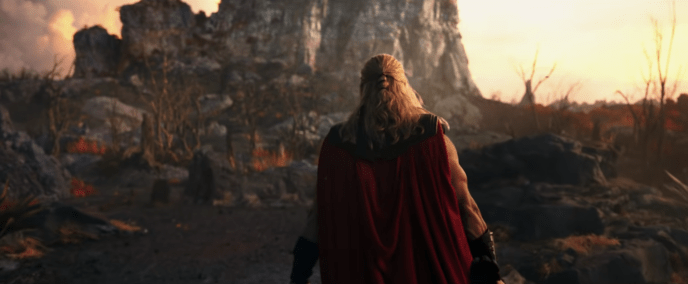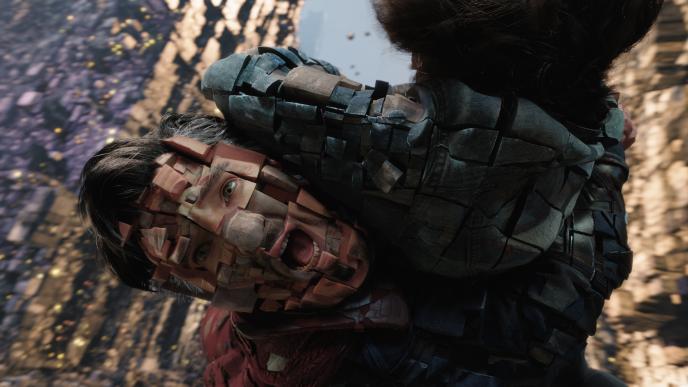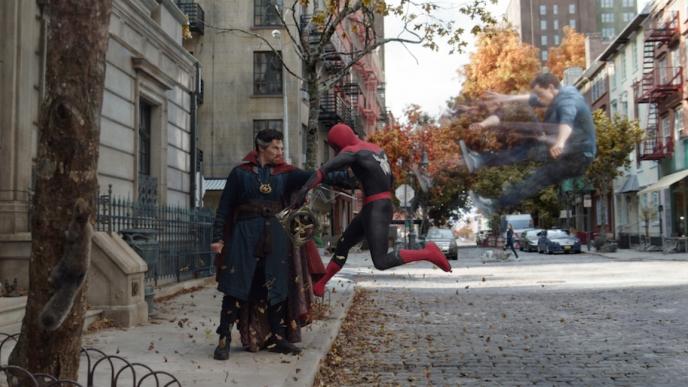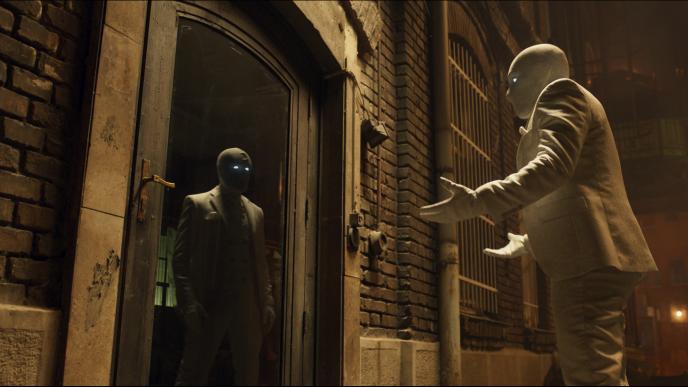

Thor: Love and Thunder
Framestore were proud to collaborate once again with director Taika Waititi on his latest foray into the Marvel Cinematic Universe. Globally, the creative studio delivered 600 shots for the film - 154 from its London and Mumbai studios and 446 shots from the teams in Vancouver and Montréal (at the time operating as Method Studios).
Such innovative work... and so varied! Every sequence was visually a world apart from the last one, and all equally striking. Congrats to the Framestore team - can’t wait for the next collaboration!
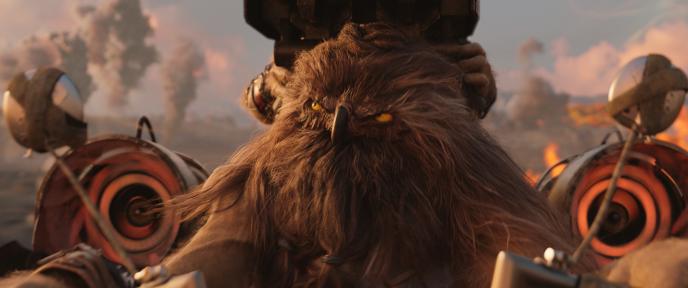
The Booskan Battle
Thor: Love and Thunder sees Thor (Chris Hemsworth) and the Guardians of the Galaxy take a well-earned break, on planet Indigarr - only to find themselves embroiled in an explosive turf war. Indigarr’s sacred temple is overrun by an owl-like alien biker gang known as the Booskans, who wage war against the planet’s inhabitants. Thor and the Guardians wade into the action, only to unleash their own specific brand of chaos.
When it came to creating a new alien species, the Framestore team were in their element. Having received designs from Marvel Studios, VFX Supervisor Matthew Twyford and team set about the building process. The Booskan Marauders were shot with prosthetics head and body enhancements on the actors and stunt doubles, the Framestore team then enhanced the faces and body to give them a range of expressions and individual character.
“They’re humanoid creatures with owl heads, but instead of feathers they have fur,” explains Twyford. “Originally, the faces were prosthetic masks and we animated them to make them more expressive. Thor and the Guardians of the Galaxy have a fantastic blend of action and humour, so animating the faces of the Booskans really allowed them to lean into the comedic elements of the battle sequence.”
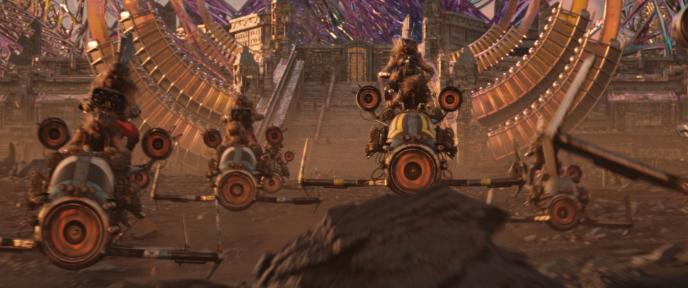
Twyford and team then built full screen quality digi-double Booskans as riders for the hoverbikes, and a full set of crowd doubles to populate the Battlefield environment. The fight scene demanded a range of FX, including gunfire and explosions. “We had a lot of busy shots, made of lots of layers,” says Twyford. “The whole sequence is about speed and visual impact. The brief was of a kind of chaotic owl biker gang, and we had fun animating their erratic but exuberant fighting and driving styles. The main Framestore creative force for the Booskans were from the animation team, who drove the modelling and rigging setups to give the faces a flexibility and range of performance.”
The bikes were inspired by more traditional bike and car chases, but the alien planet setting remained front of mind for Framestore. Non conventional (for Earth) vehicles, environmental cues, creatures and weapons were designed to immerse the audience in this strange new world. The design has elements of Mad Max and steampunk, but also had to have a 'patched up' feel to help develop the Booskan culture of chaotic warriors. “The production team built various bikes as set pieces for interaction and reference, and we recreated them as digital assets with a wide range of variation” explains Twyford. “The compositing team then developed looks for the engines, thrusters and gunfire with custom ground interaction for every bike simulated by the FX team.”
The biggest challenge was the interaction between the bikes and their riders. “There were multiple layers of simulations between different departments that had to all work together” expands Twyford. “The bikes themselves had animation driven simulations that gave life to all the cables, accessories, gunfire, flaps, flags and overall flexing. Then the riders had body, cloth and hair simulations driven by their animation and the bike's.” These combined elements were then destroyed with impacts and explosions, chaining more simulations, then finally crashing into the ground - driving complex rigid body dynamics and volumetric effects. This created many chicken-and-egg type scenarios to solve, requiring Framestore’s FX and Animation teams to collaborate very closely.
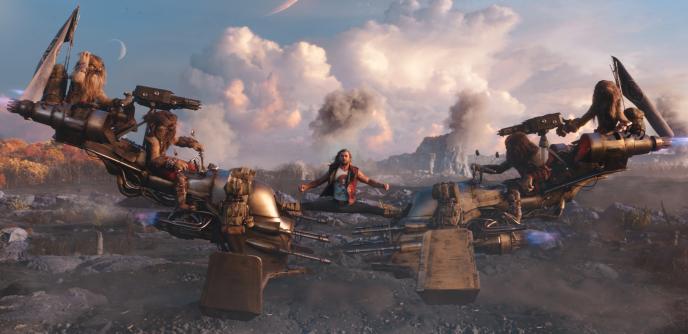
Split Screen and Shatter
One part of the segment proving to be a hit with Marvel fans sees Thor balance between two Booskans on hover bikes, charging him from opposite directions, landing in a perfect split. An homage to the Volvo advert which sees Jean Claude Van Damme perform his famous splits between two moving trucks, the shot captures Hemsworth’s top half and seamlessly comps in his stunt double’s limber legs, creating a shot that perfectly captures the light-hearted spirit of Taika Waititi’s Thor films.
After wading into the battle, Thor accidentally destroys the Indigaarian’s sacred temple, made of crystal. This required an impactful shattering effect. “The brief for this was very much driven by the comedic value of the story, so the simulation had to play to the timing and visual impact of the moment,” explains Twyford. “The FX team managed to hit the brief very early on so this allowed us to then concentrate on making sure the scale of the event was clear. We simulated a full length temple collapse to give editorial the freedom to maximise the moment.”
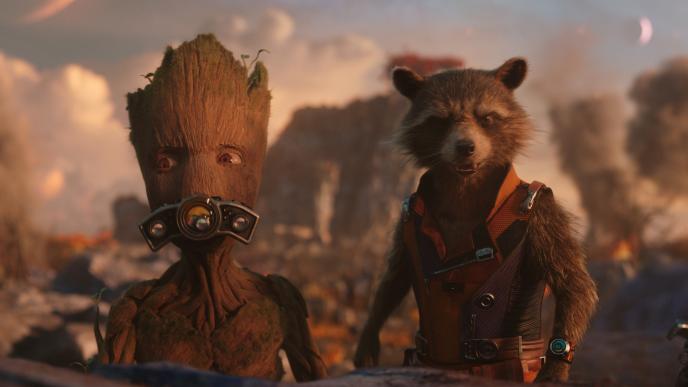
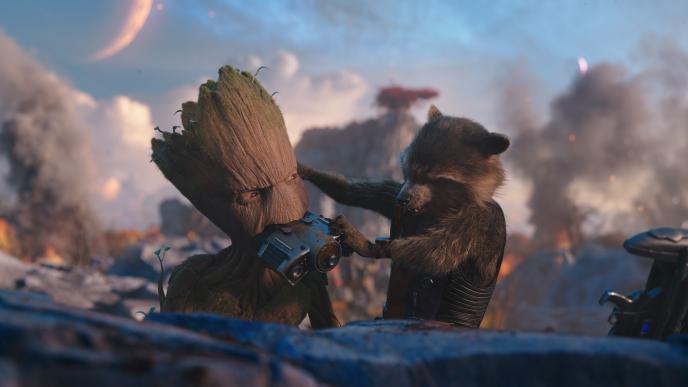
Seeing digi-double
The teams across London, Montréal, Vancouver and Mumbai came together to work on digital doubles for Groot, Rocket, Korg, Mantis, the Mighty Thor, and Thor. “Some time has passed since we last saw the Guardians, so it was time for some new outfits, as well as a new Groot variant,” says Twyford. “We see Groot as a teenager who has grown bigger but still has the same characteristics and rebellious spirit since we last saw him in Avengers: Endgame. We are introduced to the Guardians in the middle of a battle, so he is dirty and partly burnt after days of fighting.”
Korg (voiced by director Taika Waititi) also went through an evolution in terms of his facial animation. “In previous outings his face components kept very rigid structural shapes,” adds Twyford. “For Love and Thunder, we updated many of the face shapes and used a more dynamic scale feature that allowed the face to flex and warp, giving more options for expression and softening the overall performance, which gave him a slightly more organic feel.”
The costume updates for all of the Guardians were designed to reflect the new environment and situation they have found themselves in. As in all the Guardian's movies, the costumes are a mix of hi-tech and natural textures, and the challenge has always been allowing the extreme motion and poses that these characters seem to regularly use. “Thor’s dramatic splits pose is a great example of the technical challenges behind these costumes,” says Twyford. “The costume had to keep a believable stretch and crease profile, with the textures keeping coherence through an amazing expansion and contraction.”
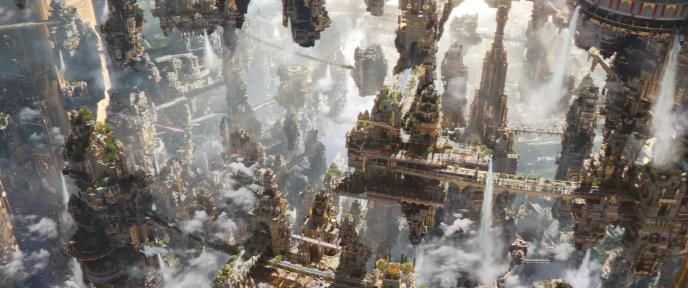
Omnipotence City
Receiving a distress call, Thor journeys to the homeworld of Falligar, and sees first-hand the carnage that Gorr the God Butcher (Christian Bale) has caused. The snowscape was a big environment build for the Vancouver team, who also had to design the god Falligar itself, as its corpse lies on the frozen shore. “Falligar the Behemoth features in Thor comics from ten years ago,” says Method Studios VFX Supervisor Pete Dionne, who oversaw a significant amount of the work from previs through to completion. “He’s one of the key victims of Gorr the God Butcher, and so re-creating that scene from the comics where Thor finds his body definitely came with some additional pressure to get it right.”
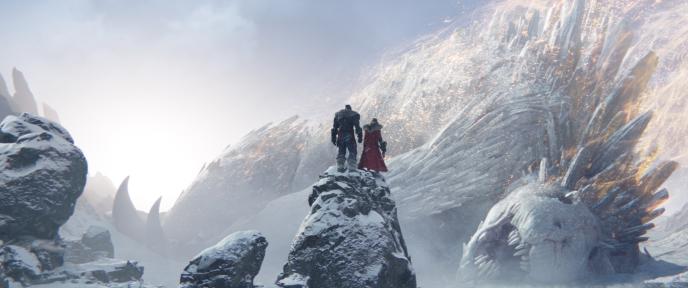
Seeking to raise an army, Thor, Jane, Valkyrie and Korg travel to a golden temple in Omnipotence City, where all the remaining Gods are gathered. A reluctant Zeus (Russell Crowe) refuses to endorse the team, and a fight breaks out as Thor challenges his cowardice, and Valkyrie makes a play for his thunderbolt. “The Omnipotence City battle was a huge challenge, mainly because it’s such a complex environment of floating cities” explains Dionne. “The main temple itself has eight foot tall golden knights, a floating stage, and vast rows of seating. It was a big job to create a crowd to fill the entire space, we then created digital doubles for fifteen different Gods that were shown up close, including Zeus himself.”
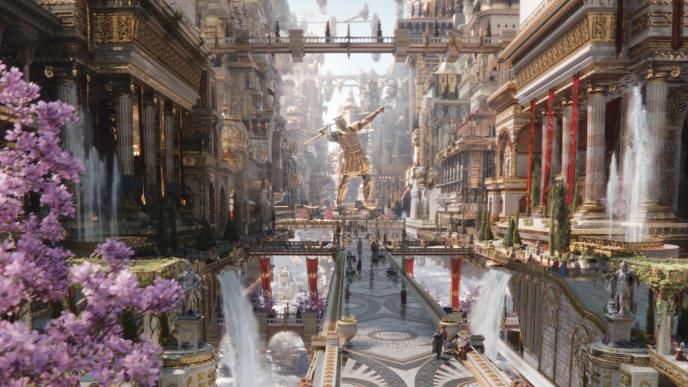
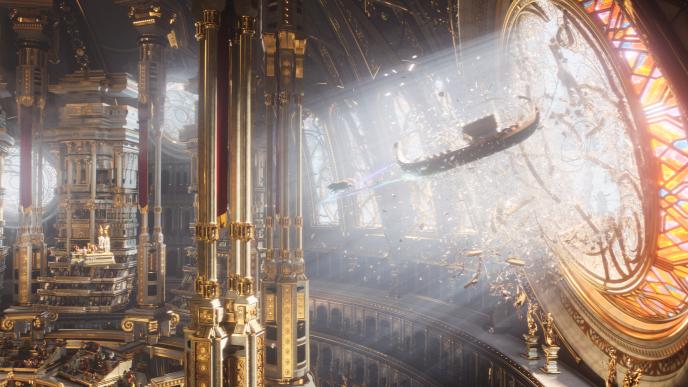
“The fight sequence was an FX feast” continues Dionne. “Thor and Mighty Thor channelling their lightning powers, Zeus’ thunderbolt, and Korg shattering into fragments of rock were all so much fun to do. We also had to establish what happens to a God in the temple when they’re killed, and after going through many iterations, we landed on the dissolving golden effect that you see in the final cut.”
Thor and the gang summon the bifrost and make their escape on a boat, pulled by alien goats gifted to him from the Indigaarians. “In a similar way, the goats were made in London and then given to the studios in Montréal and Vancouver,” adds Dionne. “I think the fans will agree, they are the gift that keeps on giving!”
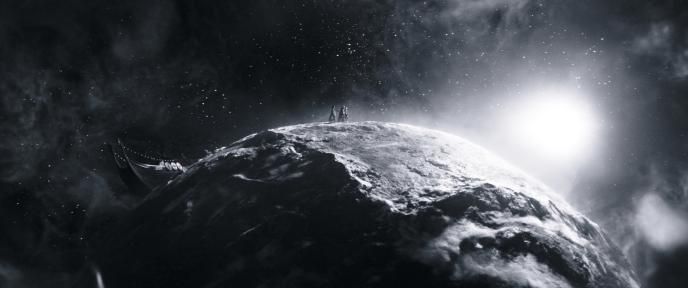
The Moon of Shame
The journey to defeat Gorr leads Thor and his companions to the Moon of Shame, a small moon within the Shadow Realm. Aptly named, the realm is a place so dark that no colour can reach it, and so the scenes take place in black and white. This section involved a significant amount of design and development by Method's Montréal and New York teams. The lighting for these scenes was an enormous technical challenge, ultimately shot with a camera capturing 600 frames per second. “We timed the cameras with the strobe lights, to generate six separate plates, and could then art direct the light and how it moved for every single shot” says Dionne. “It’s also a very dynamic environment, being low-gravity, so we added in lots of floating rocks and debris.”
Another striking aspect of this sequence was the director's bold vision to have this world exist in black and white, mixed with the colourful battle effects from our Heroes. "Though we rendered and composited all aspects of the work in full colour to ensure healthy final comps for DI to work with, we also devised a clever matte workflow to approximate the look of the final DI grade as we developed the sequence," Dionne explains. "This was much trickier than simply applying an overall LUT to the images, as the weapon effects and interactive lights needed to retain their colour, and in some instances, animate up and down in saturation. But with our procedural matte set-up and bespoke colour workflow, we were able to easily toggle between the raw colour and our dynamic stylized grades, which was crucial as we balanced our lighting and comps."
The scene ultimately proves to be an ambush, as Gorr attempts to steal Thor’s Hammer, Stormbreaker. The brief skirmish utilised digital doubles for Thor and Natalie Portman’s Mighty Thor as they fight Gorr and his shadow monsters. “Marvel Studios asked children to design the scariest shadow monster they could, and we then created the monsters based on the drawings,” explains Dionne. “Many of them made it into the final cut, including one drawn by Executive Producer Victoria Alonso’s daughter, which is a cool little Easter egg.”
